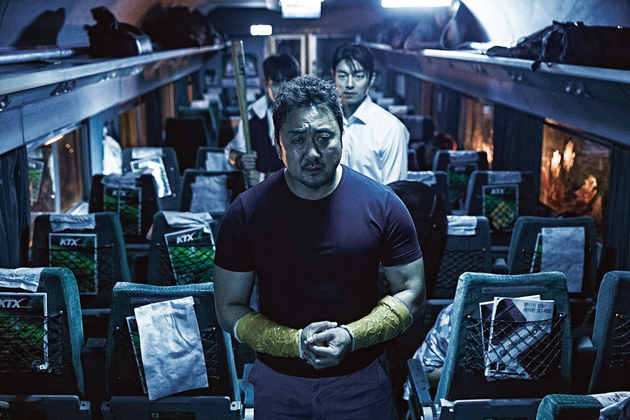What’s the deal with trains?
If you couldn’t figure it out from the title, Train to Busan is a movie that takes place on a train. Specifically, it’s a zombie movie that takes place on the train. When the movie ended, I was left wondering what exactly was it about trains that could make any movie, well, better. For if Train to Busan had taken place in a house or car or shopping mall, it would not have been quite as good. Furthermore, all of these train films are thrillers, when, in my experience, a train ride is anything but thrilling. Obviously, the setting shapes a film–but how exactly?

First off, there’s the constant motion. No matter what else is happening to the characters, they are always moving, something is always occurring. The plot is also tied up in this movement, for there is a destination and a timetable. Things must happen before you reach X or you will suffer the consequences of Y. Thus, there is both literal and figurative movement. This provides an easy source of intensity. In Train to Busan, utilizing this notion of plot-dependent-upon-destination, the film can be split into two parts. The earlier part is the train heading towards an intermediary city that seems unsafe and the later part is the train on its way to Busan. Here though, the movie deviates from conventional train movies, for what is important is not that they do X before reaching their destination, but that they survive on board long enough to reach said destination.
Movement, of course, is not unique to trains. Cars, planes, bikes, buses, and simple walking are all methods of getting from point A to point B. But not all movements are equal. Trains are not personal transportation–they are public, and with that, a larger and more varied cast of characters can be devised. After all, these people do not have to know one another nor like one another, and in fact, their dislike is often a path for tension and character development. For example, the cast of characters in Train to Busan is not restricted to a single family; instead, we have a single father, his daughter, a young high school couple, two elderly sisters, a selfish CEO, a young husband, his pregnant wife, and several employees of the train company. There are no established relationships among these different sets of characters and part of the plot is watching them learn how to work together (or against one another) to survive the zombies also on board with them. While other vehicles for travel allow strangers to similarly come together, such as planes and buses, these methods have much smaller space to work with. A train can be quite lengthy, but airplanes remain rather limited. We want the space the characters have to work in to be constrained, but not too constrained, otherwise we lose the ability to have well-choreographed fighting scenes.

Finally, there are several unique elements that trains alone possess. There’s the separate compartments which allow different ideas and challenges to manifest in different carts (for example, in Train to Busan a compartment of high school baseball players has significance) thus breaking the monotony of fight scenes and travel between them. Tunnels, objects blocking the tracks, and train stations are all elements made use of in Train to Busan and other train-oriented films. By using the uniqueness of trains, an otherwise standard zombie film has doubled down terror and action.
If you’re interested, Train to Busan will be playing again at the Michigan Theater at 7:00pm Tuesday.


